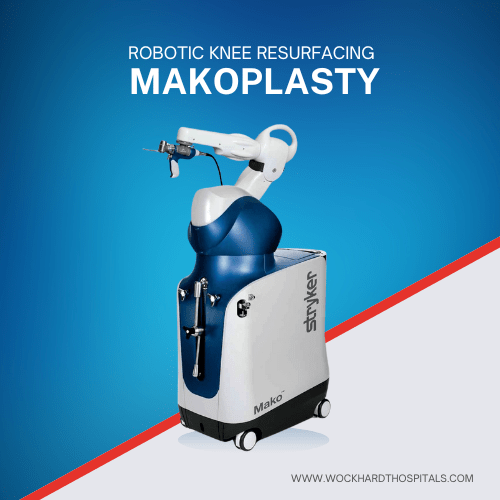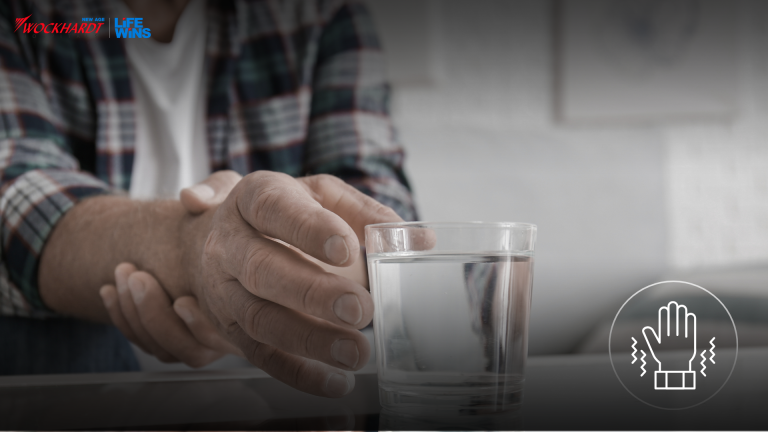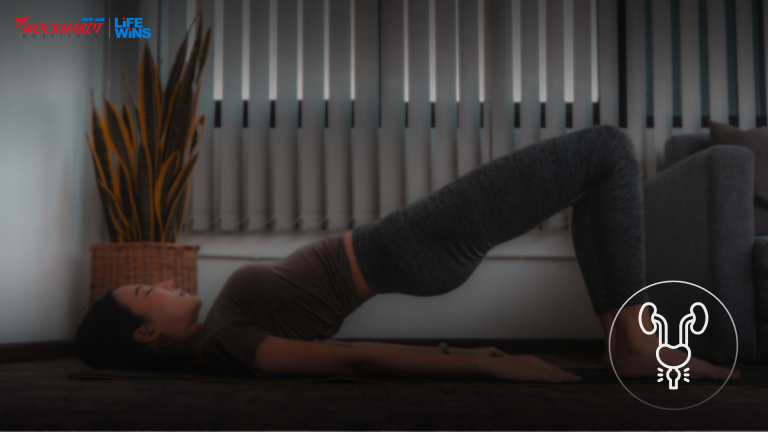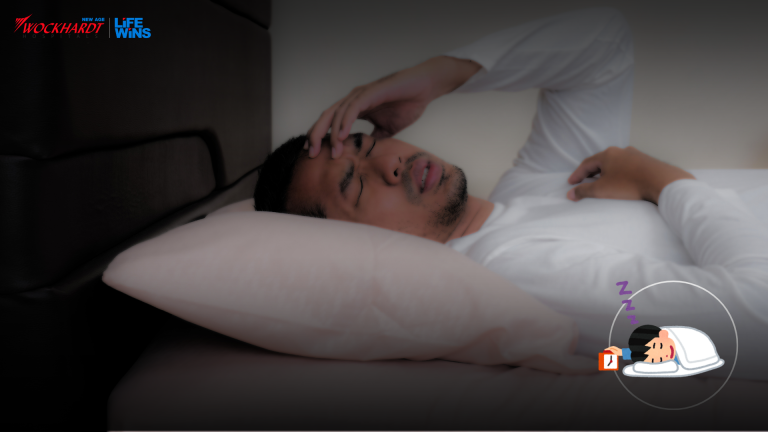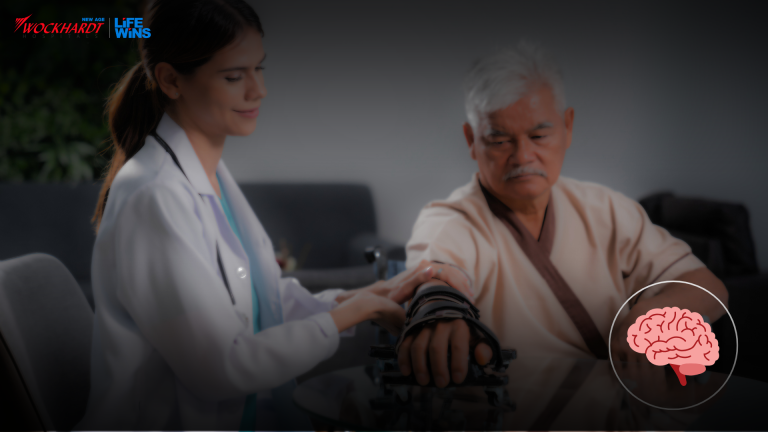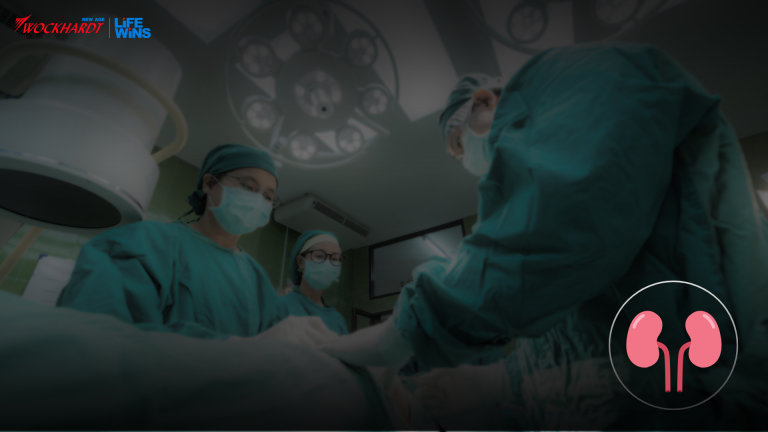Joint Replacement Way to Mobile Life

Everyone will have arthritis in their old age and post-menopausal woman may have arthritis at an early age. For the last 12-13 years, I am doing knee replacements in which I found that out of my total number of cases more than 60-70 % are female patients and usually they get operated on at the age of 60-70 years and males usually get operated in their 70-80s. Knee Replacement is rewarding surgery for those who really get disabled and should be get done at proper time not too early neither too late to keep you active in old age as it improves your activity and overall health. It gives you painless, mobile, and stable joints. A surgeon’s proper training and experience are a very important factor in deciding the best outcome of this surgery.Also truly speaking neither any advanced gadget like robot or navigation will give good result in inexperienced hands and it’s debatable nowadays all those fancy gadgets really required for experienced surgeons as long term outcome depends on a lot of other factors like age of the patient, associated medical conditions, obesity, cementing technique, bone quality, etc. Unless surgeon knows properly what is knee replacement he can’t use it and one who knows properly may doesn’t require it.Also, long-term results are yet to be proved. Usually, the patient is mobilized on the next day and within 3-4 days patient becomes comfortable walking with a walker and using the western toilet. Even stairs climbing can be started on the 5th day.By 2-3 weeks, the patient starts walking without support. This surgery gives dramatic results for those who are disabled due to knee pain.
Taking a vacation won’t cure your burnout. Here’s why

Planning a vacation to rejuvenate your senses and cure burnout? Well, here’s what a renowned psychiatrist has to say. Ever had a friend, colleague, or even boss tell you that taking a vacation will fix that feeling of constant exhaustion? Well, if the answer is yes and you are looking at taking time off, it is time to reconsider. The truth is that a few days of vacation won’t help with severe burnout. Interesting, according to a study published in the Journal of Applied Psychology, the vacation relief fades out within a week or two once you are back at work. There is no doubt that you get some relief when you take a break from your routine but many also report feeling stressed while on vacation due to the multiplying workload they’d have to deal with once back. According to experts, you reach the stage of burnout when you are unable to strike a healthy balance between work and personal life. Here’s why taking a vacation won’t help you with burnout “Taking a vacation is a temporary solution to burnout. Once you come back, the problems are still going to persist unless you address them. Addressing burnout is not straightforward. Exploring the causes and your options can ease the burden. A vacation can, perhaps, offer you a pause and help you analyse what needs to be changed once you get back, but a vacation in itself won’t cure the problem. However, taking a long weekend vacation, or simply putting away work on weekends can help you revitalize,” explains Dr Rahul Khemani, a renowned psychiatrist at Wockhardt Hospitals, Mumbai. You need to understand what exactly is a burnout Burnout is a state of mental and physical exhaustion when the demand for energy surpasses the supply. In most cases, the term ‘burnout’ is used when speaking of work pressure but other consistent stressors can lead to burnout as well. Burnout, most commonly, refers to the pressure that results from an increasingly demanding job but it can also be due to having a rigorous schedule with little or no breaks, dealing with relationship problems that are circular, or even caring for a loved one with a serious or chronic condition. Overall, it can lead to lethargy, stress and depleted levels of energy. If you try to do too much, it can also lead to exhaustion and burnout. Here are some key symptoms of burnout “The obvious impact is that it can negatively affect your work and productivity. It keeps you from enjoying hobbies, family time or relaxing outside of work. It also increases the risk of depression and suicide. In addition, it also causes a rise in the risk of developing physical ailments such as diabetes and cardiovascular diseases,” concluded Dr Khemani. Ladies, you need to find the root cause of your stress and exhaustion before booking that vacation. Source: https://www.healthshots.com/mind/mental-health/taking-a-vacation-wont-cure-your-burnout-heres-why/
Joint Replacements of the Knee, Hip, Shoulder and Elbow are Life-Changing, Long-Lasting Solutions

While past generations often put off seeing a doctor for joint pain, today’s active adults are finding relief with total joint replacement surgery. Wear and tear on joints are a natural part of aging, so too are the inevitable aches and pains that come with it. Osteoarthritis is the most common type of arthritis, affecting more than 56.6% elderly population in India. The bones that make up your joint surfaces are covered with a protective layer of cartilage that absorbs shock and vibration and allows the bones to glide smoothly during motion. Arthritis causes the cartilage to gradually wear away, resulting in a painful rubbing of bone-on-bone. All of your joints may be affected by osteoarthritis, although weight-bearing joints, such as the hip and knee, tend to be the most painful. Other joints such as the shoulder and elbow are also involved causing annoying pain and functional disability. People who cannot function day to day because of pain or having rest or night pains and have restricted mobility are good candidates for surgery. The main objective of joint replacement surgery is to replace the injured or wound joint surfaces with materials such as metal, plastic, polyethylene, ceramics, or a combination of materials. The material selected depends on the reason for the surgery, as well as which joint is being replaced. There are more varieties of artificial joints available now than ever before and orthopedic surgeons will help decide which option is the best for your individual needs. Results after joint replacement are more consistent now thanks to new techniques, technologies, and materials. Few knee replacements in selected patients can be done minimally invasive subvastus approach having faster recovery, short stay, and less pain. Also, there is no absolute age restriction for these surgeries with average ages of 50 to 80years. It is proved now that joint replacement tends to be easier when you prepare for it like weight reduction, preoperative exercise protocols, improve safety and comfort at your home for easier postoperative independent ambulation. Knee replacement is the most successful surgery in all of medicine and most people have a better quality of life. Hip replacement is also a very successful common surgery done by orthopedic surgeons mostly for avascular necrosis, hip fractures, and hip arthritis and making most patients ambulatory the second day after surgery. Patients with shoulder and elbow arthritis problems try to bear and tend to delay or avoid joint replacement for long. But in the last two decades with advancements in shoulder and elbow replacement, we are able to give predictable best functional outcomes. Patients should be encouraged for these surgeries to lead pain-free and functional daily activities of the upper limb. Joint replacement recovery can be long about 6 to 12 weeks and involves a lot of walking, daily exercises and rehabilitation program. Your new joint may feel or sound different, which is normal, but you will get tuned to it with time. Gradually you will have full recovery and can look forward to returning to active life and leaving pain behind. Joint replacement cost is often a concern for people considering surgery. Most health insurance plans cover this surgery and also many government schemes can be availed. Considering high burden of disease even package prices have come down considerably to make it more affordable. Joint replacement implants have mechanical components, which have wear and tear with them. However, more than 90%implants will last 15years at least. Some will last much longer. You can extend the life of your implant by maintaining a healthy weight, avoiding high-impact activities, and staying fit and active. It is essential to have regular physiotherapy and orthopedic surgeon follow up to monitor implants for longevity. Patient awareness, education, improved healthcare facilities, gadgets, technological advances, implant inventory, improved pain management, and anesthesia practices have certainly made joint replacement a big boon to humans suffering from arthritis.
Wockhardt Hospitals, Mira Road Successfully Performed A Complex Surgery to Save Eyes of A 26-year-old Accident Victim with Multiple Facial Fractures

A team led by Dr. Abdul Hameed, a Consultant Maxillofacial Surgeon, Wockhardt Hospitals, Mira Road, successfully operated a 26-year-old accident victim for multiple facial fractures to save his eyes and eliminate the risk of vision loss. The patient was discharged without any post-operation complications and under follow-up for two-three months. A 26-year-old Yash Kanojia, a resident of palghar, met with an accident while traveling on a bike. Initially, he was admitted to the local hospital for primary care later patient was shifted to Wockhardt Hospitals in Mira Road. Dr. Abdul Hameed, Consultant Maxillofacial Surgeon, Wockhardt Hospitals, Mira Road, said, “On arrival in an emergency the patient was critical and was advised immediate CT Scan to rule the situation of the eye and facial fractures. His CT scan revealed that there were multiple fractures on the face involving the bones around his eyes and that could have led to vision impairment. Hence, the patient was advised to undergo fixation of all the facial bone fracture and exploration of eye and repair of orbital bone fractures impinging on the eyeball, once he was neurologically fit for the surgery till then he was managed with medications.” Dr. Hameed added, “To avoid further complications, it was decided to perform the surgery in one go. The surgery lasted for 3-4 hours. The surgery was carried out smoothly with desired results. Timely intervention, proper diagnosis, and treatment can save people.” “His life was shattered after that ghastly accident. He had bruises all over his face and he couldn’t even see properly as the facial fractures compressing his eye. We were disheartened and not able to understand but doctors at the hospital gave us hope and assurance that he will be fine. We thank the doctors for their prompt treatment for saving his eyes in fact his eyes. 2021, have got a fresh lease of life to our son,” concluded the patient’s father Papu Kanojia. Source: https://www.biotechasianews.com/wockhardt-hospitals-mira-road-successfully-performed-a-complex-surgery-to-save-eyes-of-a-26-year-old-accident-victim-with-multiple-facial-fractures/
International Childhood Cancer Day 2024: February 15
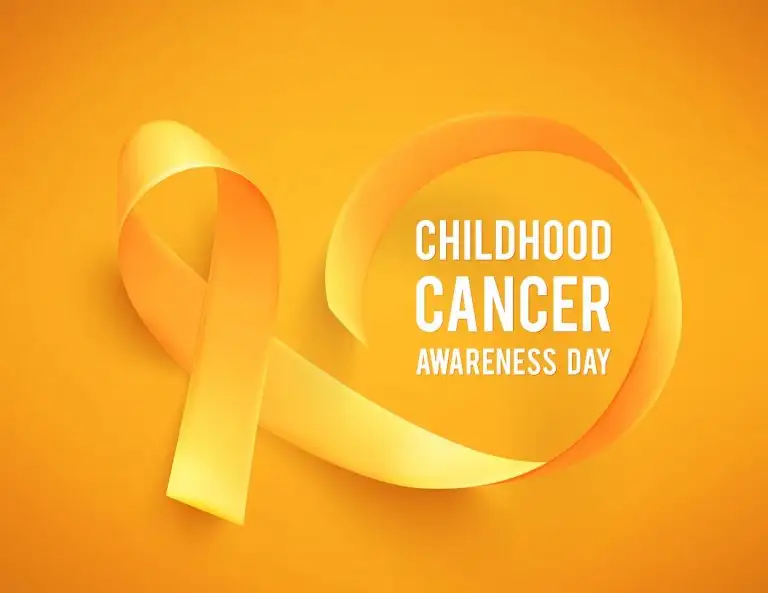
February 15 marks International Childhood Cancer Day, which marks the day to raise awareness regarding cancer among children and to provide support to the adolescents and children who are either suffering from cancer or have survived the ailment as well as their families. It is an international collaborative initiative. Every year worldwide, over three lakh children are diagnosed with cancer and in India, more than 40,000 to 50,000 new childhood cancer cases are detected annually, Dr. Atul Narayankar, who is Consultant Medical Oncology at Wockhardt Hospital, Mira Road, told Financial Express Online. According to a Lancet Oncology journal study dated July 2019, most of the cases of childhood cancer come from low- to middle-income countries, and among these children, the survival rates are poor. Census 2011 also revealed that the prevalence of childhood cancer was the highest in India, likely due to the fact that 30% of the Indian population was younger than 14 years of age. The study by Lancet stated that of the childhood cancer patients in India, less than 20,000 get access to treatment. Considering the high prevalence of cancer among children in India, it is important that people in India become aware of this issue. Types of Cancers Prevalent Among Children “Blood cancer is most common in children. It can be either lymphoma or leukemia. Brain cancer is also witnessed, along with the bone tumor. Neuroblastoma is another common type of cancer seen among children. Apart from this, a tumour of the kidney (Wilms’ tumor) and tumor of the eye (retinoblastoma) is also seen,” Dr Narayankar said. How to Identify Signs of Childhood Cancer? According to Dr. Narayankar, children may commonly present signs like fatigue, fever, bleeding in gums, or bleeding under the skin (ecchymosis). Children suffering from leukemia usually display signs of bone pains, swelling as well as lumps. Retinoblastoma leads to new squinting, white-eye reflexes, or even loss of vision. “Abdominal lump is formed due to Wilms’ tumor. Meanwhile, brain tumor usually causes symptoms like vomiting and headache,” he said. When Should Parents Consult Doctors? Dr. Narayankar said that it was important that parents did not ignore these symptoms and immediately contacted doctors. Testing of a single complete blood count can lead to a diagnosis of leukemia, which can help in expedited action. “Investigations in such cases include conducting blood tests, CT-Scan or MRI imaging, and biopsy, which means tissue diagnosis,” Dr. Narayankar said. He also stated that usually, 70-990% of childhood cancers are completely curable, because children respond to treatments much better than adults do. Usually, chemotherapy, radiation therapy, and surgery are used for treatment, but in some high-risk cases, a bone marrow transplant may be required. Increased Hardships in India While 70-90% of cases of childhood cancers are completely curable, only about 20,000 out of 50,000 cases get access to treatment in India, indicating a huge gap in the healthcare system to effectively tackle this issue. As long as the medical treatment of cancer is supported by proper nourishment and an infection-free living environment, cancer among children can be cured, but the lack of such care is an issue among people coming from smaller towns to bigger cities like Delhi and Mumbai for treatment. Since cancer treatments can last up to two years, people coming from rural India often have to resort to means like living on footpaths or other unsafe accommodations due to a lack of other hygienic facilities. Nor can they ensure proper nutritious food in such situations. Due to this, ailing children catch secondary illnesses, which form the cause of the majority of deaths in such cases. While this is a major issue due to the glaring difference between rural and urban healthcare facilities and the major pay gap in the country, several organizations make efforts to tackle this problem. One such organization is St Judes India, which is operating in nine cities in the country presently. Talking to Financial Express Online about their work, St Judes India CEO Anil Nair said, “We create a homely environment for families whose children are battling cancer and are going through a tough phase in their lives. We work closely with a number of hospitals in major cities to ensure we are able to provide the best care and support required by a child to beat the illness.” While cancer among children is a major issue, it is not an unsolvable one. There is an immediate need for the creation of more hygienic facilities in urban areas where families coming from rural areas can find temporary shelter while their children fight the battle with cancer, and in the long run, the creation of better healthcare infrastructure in rural areas is needed. Source: https://www.financialexpress.com/lifestyle/health/international-childhood-cancer-day-2021-with-over-50000-cases-a-year-cancer-in-children-a-big-issue-for-india/2195259/
High Risk Pregnancy – When Pregnancy becomes a Nightmare
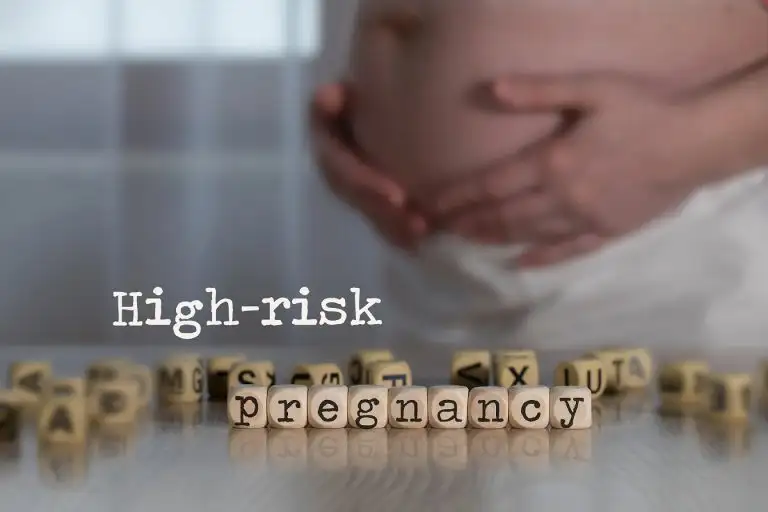
Pregnancy – is a boon from God to every woman and it’s a wonderful time in her life. Great care should be taken of the pregnant women during pregnancy so that this journey of pregnancy ends on a happy and safe note. While the period of pregnancy seems pleasant, there are also some potential complications during this time. According to a statistic, as many as 44% of pregnant women in India experience unexpected complications during their pregnancy. Why does this happen? I will tell you how you can move towards a safe delivery by recognizing the red flag signs during pregnancy and how to get these ailments treated on time. Now you may be wondering how to identify a high-risk pregnancy, a pregnant woman who has some kind of heart disease, kidney disease, high blood pressure (hypertension), diabetes are at risk of potential complications. Along with this, we call a pregnancy as high risk when it is a pregnancy of women who have had an IVF and women who are about to have twins or triplets. At the same time, if the pregnancy shows any signs & symptoms such as sudden bleeding, sudden loss of consciousness, excessive pain, no or very fewer movements of the baby in the womb, then the pregnant woman needs to be attended by an Obstetrician immediately at a hospital. Women who are at risk of such complications should seek regular checkups from an Obstetrician at a hospital that provides comprehensive treatment & care. Infrastructural support needed to handle such cases of high-risk pregnancy requires facilities like Sonography (USG), well equipped Operation Theater, 24 x 7 availability of Obstetrician & dedicated nurses, a separate Intensive Care unit for the Newborn (NICU), and 24-hour availability of Anesthetist, Pediatrician, Cardiologist, Nephrologist and Intensivist, etc. Such a hospital where all these basic facilities are available for handling a high-risk pregnancy will help you to have a safe & comfortable delivery experience. Last but not least, identify the red flag signs during pregnancy, give the doctor a complete idea about your medical history, take your prescribed medications on time, get regular check-ups done and follow the prescribed instructions by your doctor. Adherence to these instructions will surely make your pregnancy experience a pleasant one! Dr. Shraddha SabnisDGO, DNB (OBGY), FMASConsultant – Obstetrics & GynecologyWockhardt Hospitals, Nashik
Newest Advancement in Joint Surgery – ARTHROSCOPY
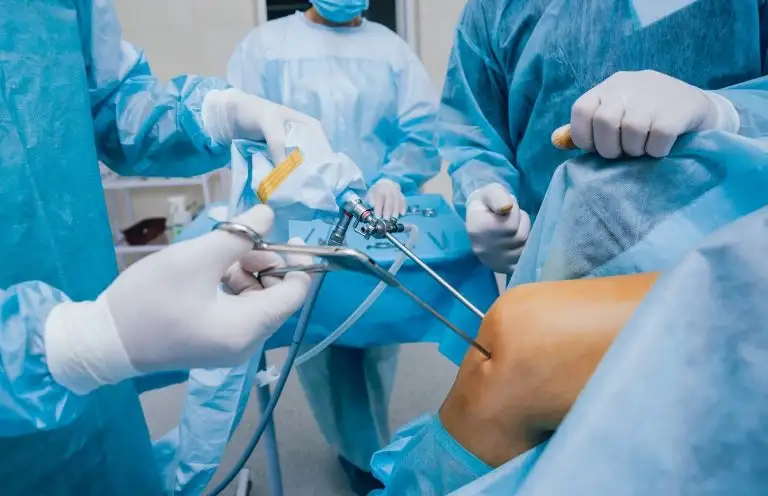
Arthroscopy is a surgical procedure performed on the joints by a special instrument called an Arthroscope and has developed into a new and reliable technique in the field of medicine. There is not much awareness in society about it. In the last few years, radical changes have taken place in the medical field. Earlier, major surgery was required for the disorders, it was a combination of a large incision, excessive bleeding, longer hospital stay, and longer recovery time after surgery. But today, it is not like that. Due to the progress in the medical field, it has become possible to perform surgery without any major incision, as a result, the patient can recover faster and start his daily routine early. Let us now understand what Arthroscopy is and how it is done using an Arthroscope. Arthroscopy is a surgery performed on Joints with help of a special device known as an Arthroscope, which is only 4 mm wide. This device allows the doctor to see the structure of the joints clearly on a monitor screen and make it possible to operate on the joint without making a large incision. Knee, shoulder, hip, elbow, wrist, and ankle joints can all be operated with arthroscopy. If the patient has any complaints like cartilage tear, ligament tear, injury to cartilage, knee arthritis, injury to the knee cap, frozen shoulder, rotator cuff tear, frequent shoulder dislocation, all ailments can be treated by arthroscopy. Treatment is definitely beneficial. There is no need to be afraid of surgery at all, be it is a sports injury, arthritis, or an accidental joint injury, due to technological improvement it is effortless to operate on joints without any incision through Arthroscopy. This results in less bleed during the surgery, less pain, and the patient gets discharged from the hospital early, gets recover faster, and can start his daily routine early. Lastly but likely, for the sake of the patients, I would like to say that if they need surgery for joints, the possibility of the surgery through arthroscopy must be well taken into consideration. Dr. Ajinkya DesaleMS (Ortho), Fellowship in Sports Medicine & ArthroscopyConsultant – Sports Medicine & Orthopedic SurgeriesFor Appointment, Call: 0253-6624444
Patient Ignored Foot Pain, Got Blood Clots

Ignoring the pain in the left leg turned into a nightmare for a 47-year-old businessman from Mumbai when he was diagnosed with the rare complication of deep vein thrombosis (DVT), a condition wherein blood clots form in the veins that are located deep inside the body. The situation came to a point where local doctors advised him for amputation of the leg. However, his leg was saved by the timely intervention of doctors at Wockhardt hospital by performing extensive skin grafting procedures. Mr. Rane (name changed) couldn’t concentrate on his work as he encountered unexplained foot pain and swelling in the left leg in 2016. He was diagnosed with DVT. He was taking regular medications and precautions for the same. But the Coronavirus lockdown turned into a nightmare for this patient as it aggravated his condition. Due to the long hours of sitting during the lockdown, he experienced foot pain in July 2020 and was unable to walk. The patient and his family panicked as his left leg turned black as he couldn’t get proper medical advice. Dr. Girish L. Bhalerao, Super Specialty Consultant Orthopaedic Surgeon, Wockhardt Hospital, said: “On admission, the patient was in septic shock, which is a serious condition that leads to infection throughout the body and one’s blood pressure drops as well.” Dr. Upendra Bhalerao, Cardiovascular and Thoracic Surgeon, Wockhardt Hospital, Mira Road, said: “DVT affects the legs and causes disruption in the vascular outflow. Delayed diagnosis and not treating the clot at the right time can lead to scar tissue in the wall, permanently damaging the deep veins.” “In serious cases, DVT causes a pulmonary embolism, a blood clot that travels to the lungs. In this patient, deep vein thrombosis treatment had led to necrosis of the entire circumference of his leg and caused a life-threatening infection,” added Dr. Upendra Bhalerao. Initially, the patient was stabilized and the infection was controlled. Once that was done, the skin necrosis was tackled by Dr. Shraddha Deshpande, Consultant-Plastic and Reconstructive Surgeon at the hospital. Dr. Deshpande said: “Post DVT, the skin of the leg was severely damaged and required extensive debridement. Immediate cover of such a large wound was necessary, hence a skin grafting procedure was performed for this patient.” “He also had necrotic skin patches in his thighs which were addressed later in stages. Due to his disease, his blood coagulation had to be monitored continuously to make sure there is no bleeding during this extensive surgery. Eventually, the patient has healed completely and can now walk pain-free,” said Dr Deshpande. “Leg pain snatched away my peace of mind over the years. But, during the lockdown, my condition worsened and my left leg turned black. I was embarrassed and would wear full pants so that the leg is not visible. It took a toll on my self-esteem as my left leg appeared discolored when compared to the right one,” said Mr. Rane. Source: http://www.drugtodayonline.com/medical-news/nation/12852-patient-ignored-foot-pain-got-blood-clots.html
3 of the biggest causes behind acne (and what you can do for each)

Whether you’re dealing with a recent breakout or an old one that you can’t seem to get rid of, here’s how to identify the different causes of acne and pimples, and how to treat each There’s nothing more annoying than a random pimple that shows up when you least expect it. But if you’re slathering on traditional acne medication in the hopes that you can force it to disappear ASAP, you could be doing more harm than good, especially because it might not be regular acne in the first place. We asked two experts to tell us what those offending spots could mean—and what you can do. Bacterial acne What it is: “Bacterial acne results in lesions of different sizes, blackheads, whiteheads, bumps, nodules, and cysts,” says Dr. Mhatre. It is caused when excess sebum clogs the hair follicles. When bacteria begin to grow in these follicles, it creates blackheads or whiteheads on the surface of the skin, which can get more infected. Where you might find it: It is found in areas that are prone to higher sebum production, like the face (particularly the T-zone) and the neck. What you can do: The treatment for bacterial acne includes topical application of actives such as retinol, benzoyl peroxide, and salicylic acid. The former, retinoids, exfoliate the skin and prevent the hair follicles from being plugged by sebum and skin cell buildup. Benzoyl peroxide kills the p.acnes bacteria on the skin (which prevents any blocked follicles from turning into inflammatory acne), while oil-soluble salicylic acid is able to get into the pores to break down any debris, says Dr. Rinky Kapoor, cosmetic dermatologist and dermato-surgeon, The Esthetic Clinics. Fungal acne What it is: “Fungal acne is caused by Malassezia, which is the same fungus that causes dandruff. It presents itself as small closed comedones, with whiteheads beneath. They are small tiny bumps of similar size that appear in clusters and not just one or two,” says Dr. Madhulika Mhatre, dermatologist, Wockhardt Hospitals, Mumbai. It is normally associated with itching—a big differentiator from bacterial acne—she says. “Our body keeps Malassezia in balance, but in certain scenarios it is overproduced, such as in humid weather, sweating, low immunity, if you have been sick or been on antibiotics,” says Dr. Mhatre. Where you might find it: It is more commonly present on the seborrheic areas of the body such as the forehead, back, shoulders, and neck. What you can do: A pro will prescribe a body wash or shampoo that is anti-fungal. In some cases, a sulfur-rich wash is the first course of action. It can be strong, so contact therapy is usually suggested. “Don’t wear sweaty clothes, change out of your gym clothes as soon as you’re done wash your face, and shower twice to make sure,” says Dr. Mhatre. You don’t want to slather on anti-bacterial treatments onto fungal acne because they can kill the normal (helpful) bacteria that live on the skin too, causing an environment for the yeast to over-grow all that much more. Instead, products with probiotics can serve to balance the skin’s pH. Folliculitis What it is: Folliculitis is an inflammation of the hair follicle. “Waxing and shaving might be the biggest culprits, especially if the former causes ingrowths and the latter are done with an old razor,” says Dr. Kapoor. In this case, the cause is not as specific—yeast or bacteria could take advantage of the inflammation and infect it. Where you might find it: It appears as a formation of a pus boil around the hair follicle and can appear on any part of the body where there is hair. Most commonly, you’ll find it on the arms, legs, and back. What you can do: Dermatologists will prescribe antibacterial cleansers and topicals that’ll prevent infection. If waxing and shaving are causing folliculitis, doctors suggest laser hair removal—by shrinking the hair follicles, the density of hair that grows in the area is reduced, which eliminates the possibility of them getting inflamed and infected. Source: https://www.vogue.in/beauty/content/3-of-the-biggest-causes-behind-acne-and-what-you-can-do-for-each
Why Bad Hair Days are Still Haunting Us

Even after almost a year, the stress of covid-19 is resulting in increased hair loss If you have been losing your mind over losing hair since the beginning of the pandemic, you are not alone. Our hair grows in different stages and many factors contribute to hair loss. Doctors agree the lockdown has made people more aware of their hair and skin issues and has brought the focus back on an individual’s well-being. “The increased stress during this pandemic situation has manifested in different ways and hair fall is one of the common issues that we have seen among many patients,” says Madhulika Mhatre, dermatologist, Wockhardt Hospitals, Mumbai. “However, before being alarmed or stressed about the hair fall, it is worthwhile to know that losing up to 100 hair daily is considered normal.” The reason and the solution to this lie in the growth phase of our hair. The hair cycle comprises three stages—growing phase (anagen), resting phase (catagen), and shedding phase (telogen). “The hair that you see fall when you wash or comb your hair is telogen hair and up to 15% of our hair is in this stage at any time. The rest of the hair is in the anagen phase, catagen is a small phase so is hardly recognizable,” explains Rinky Kapoor, cosmetic dermatologist, and dermato-surgeon, The Esthetic Clinics. In case of a stressful event, close to 50% of the hair in the growing phase goes into the shedding or telogen phase, leading to excessive hair fall. Temporary hair loss has been a common occurrence in the past year. “This type of hair loss is a reactive hair loss triggered by metabolic stress, hormonal changes, and medications. The association of stress and anxiety with hair loss is a vicious cycle. Stress causes a large percentage of hair follicles to remain in the resting phase. These strands are shifted to the telogen stage, leading to hair shedding. This may lead to increased stress,” says Dr. Mhatre. Why Else are you Losing Hair? In many cases, people were already suffering from hair loss but started noticing it only during the lockdown. “Now that we are at home more, many are not exercising, sitting for long hours, consuming excess sugar and junk food, which leads to being overweight. People have lost jobs, salaries have been cut, and all these situations have led to anxieties and stress, triggering hair loss,” says Dr. Kapoor. Those who suffer from obesity also have hormonal imbalances, which can lead to hair loss. Telogen effluvium usually occurs post the first three months after a stressful event. Doctors have also seen patients who have recovered from covid-19 experience heavy hair fall because of low immunity, medication, and stress. This hair loss is temporary. With the right supplements and growth serums, the hair will recover in a couple of months. For those who have seen hair loss in the initial stages of the outbreak, and seen it come back after a pause, there might be another reason. “There is an increase in the normally observed seasonal shedding of hair during winters. This could be a probable cause/reason as to why this recurrence may happen,” reveals Dr. Mhatre. So, what’s the solution? Exercising and eating healthy. “It is important to have a balanced diet that gives enough carbs, good fats, and protein,” says Dr. Kapoor. However, stressing over eating right and counting calories is not going to help. “You need to de-stress. Get involved in a good hobby or practice yoga. Choose the right products, keep hair procedures to a minimum and seek the advice of a qualified dermatologist who can help you get to the root of the problem,” recommends Dr. Mhatre. Source: https://lifestyle.livemint.com/fashion/beauty/why-bad-hair-day-is-still-haunting-us-111610728739882.html







